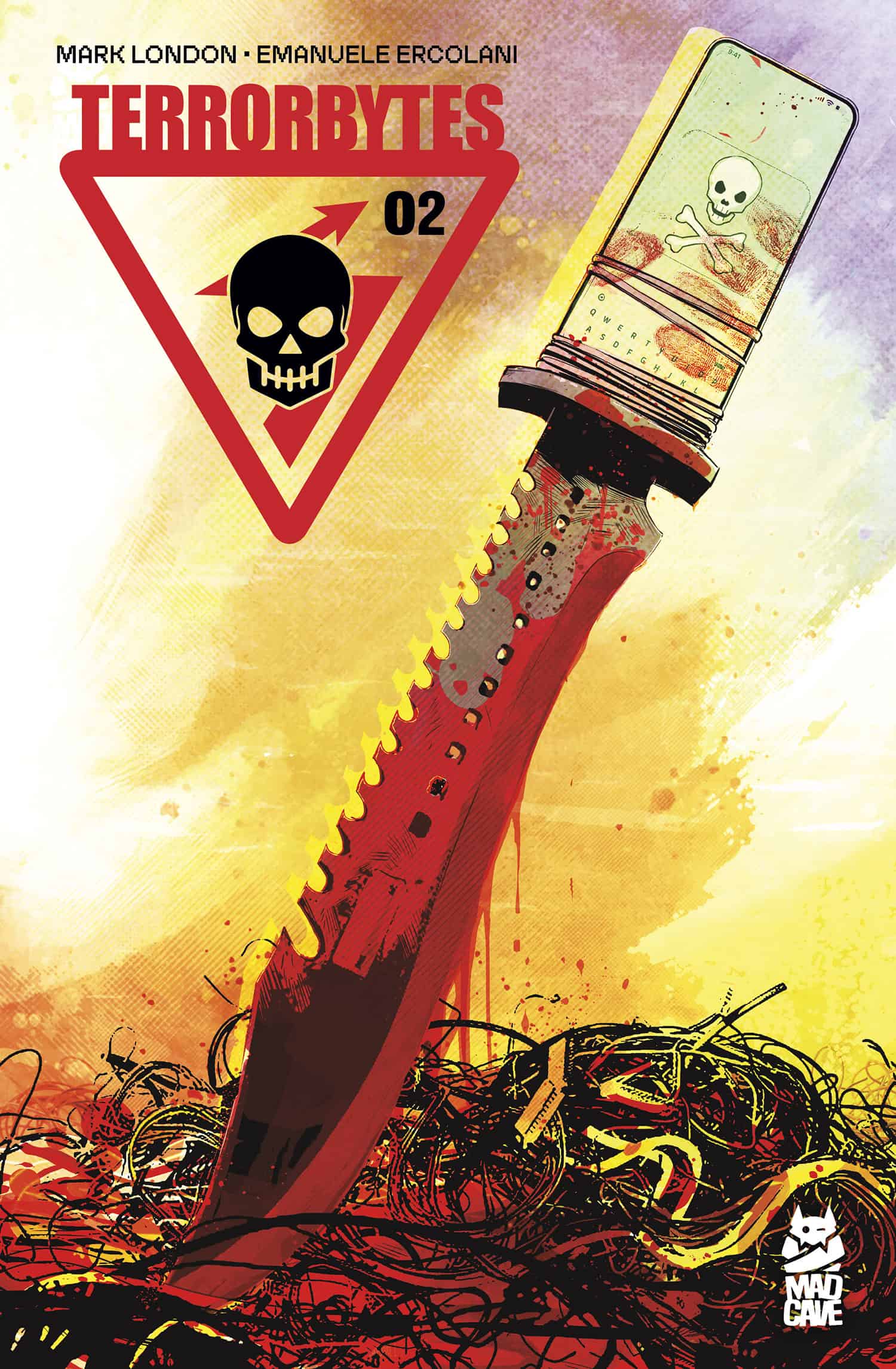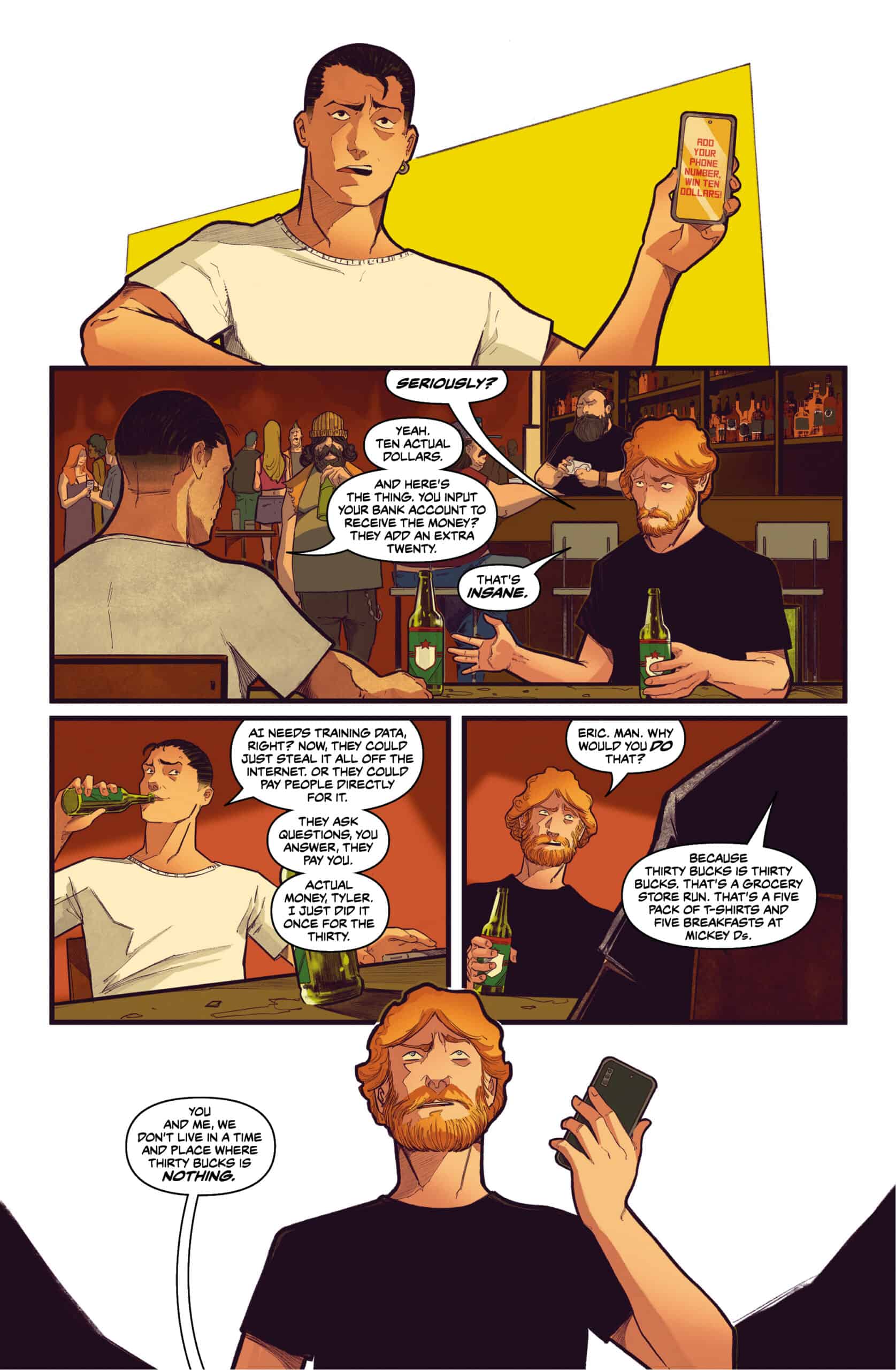Terrorbytes #2

Recap
In a near-future world where an app pays users for their secrets, one man’s desperation for a better life drives him to share more—and risk more—than he ever imagined. TERRORBYTES is a chilling descent into the seductive power of surveillance, self-disclosure, and the price of feeling seen in a world that’s always watching.
Review
Terrorbytes #2 is terrifying. Not so much because of the story in a vacuum but because it has a strange ring of truth based on how AI is already developing in the real world. Is it so far-fetched to think that people would do unorthodox and dangerous things to each other if an app that’s paying them money tells them to?
The AI app in Terrorbytes #2 asks questions and pays money for responses, supposedly for innocent data gathering to help develop a product. The more extreme the answers, the more money a user can make. The idea at the heart of Terrorbytes #2 and the way it unfolds is creative, and London develops the concept slowly and logically.
Key to the app’s function in the story is London’s use of the present day for Terrorbytes #2’s setting. The main character, Tyler, works as a delivery driver in the gig economy, has trouble making ends meet, lives in a lower quality apartment, and doesn’t expect to ever move out of a town he doesn’t like. London uses current economic circumstances (without making any kind of value statements) to justify people willingly using such an invasive and potentially dangerous AI product.

London also makes the good choice to center the story on Tyler. The app may be the novel technology (which is what drives Terrorbytes as a series), but the app isn’t the main character. Tyler is sympathetic and easy to invest in. When Tyler’s behavior starts going to darker places late in the story, that sympathizing makes what is going on all the more disturbing.
Coloring in Terrorbytes #2 is almost always infused with pale yellow undertones. The major exceptions are scenes that take place in dark interiors or outdoors at night. The result, though, is that something feels off in this world. Canola’s work doesn’t necessarily create a visual sense of dread, but it’s somehow appropriate that this story isn’t taking place in a world with bright blue skies. London’s very disturbing story is at home in the world Canola’s coloring creates.
Ercolani’s art plays well into Tyler’s likability. Linework on him and his friend is fairly conservative. Ercolani doesn’t add detail much beyond mouth and eye shape which is how most of their emotions are expressed. In the case of Tyler, though, a full beard accentuates expressions on the lower half of the character’s face. So even when Tyler doesn’t appear overly happy, he has an affable quality. When Ercolani draws Tyler smiling, he’s practically jolly. The flipside, of course, is that as Tyler’s actions become more disturbing, his expressions carry more distress.
There aren’t many other characters of consequence in Terrorbytes #2, but most of them have exaggerated features and expressions relative to Tyler. Ercolani adds more lines to create broader emotions. Tyler remains the most relatable character in the issue as a result.
It’s not always clear whether the app is communicating with Tyler via text on his phone’s screen or audio. Regardless, the app’s side of any “conversation” appears in rectangular caption boxes. Mangual organizes the exchanges between the app and Tyler as any exchange with dialogue bubbles would be organized. It makes for a seamless reading experience.
Final Thoughts
London’s story would be clever under any circumstances. What makes it work especially well, though, is that the underlying idea feels ripped from the headlines. Terrorbytes #2 is disturbing and showcases the series’ high potential. A must read.
Terrorbytes #2: Too Real
- Writing - 9.5/109.5/10
- Storyline - 10/1010/10
- Art - 8/108/10
- Color - 8/108/10
- Cover Art - 6/106/10





